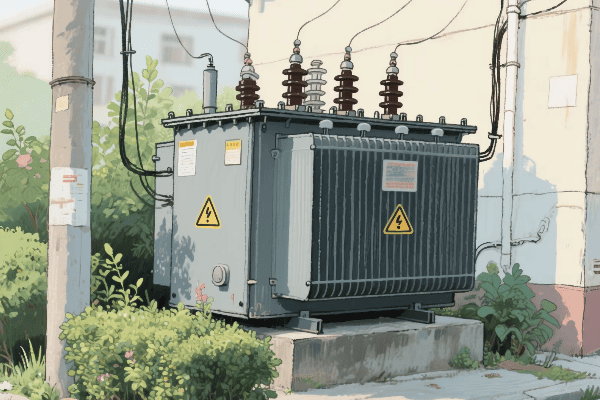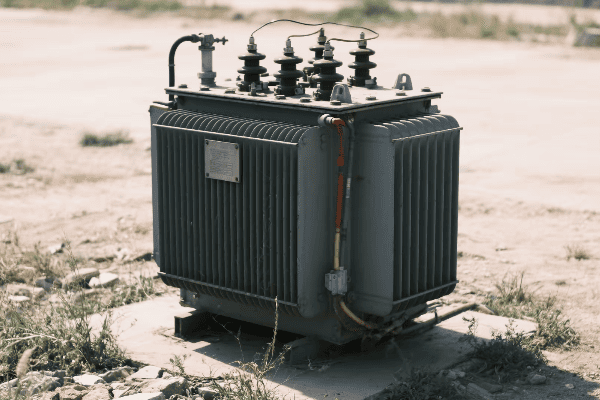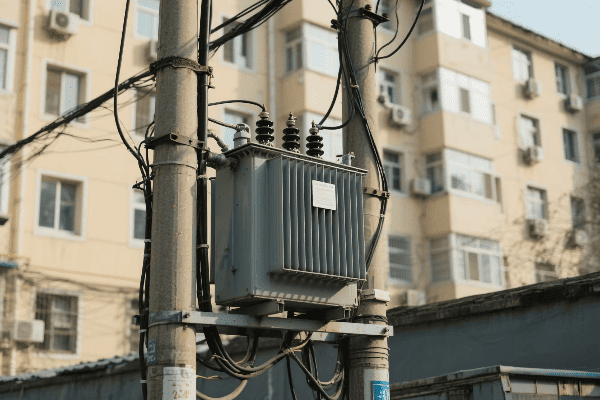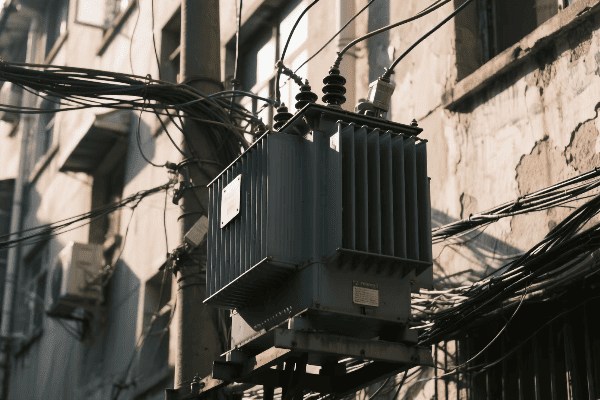Are you tired of high energy bills and power losses? The digital age demands more efficient power solutions. But how can we meet this challenge?
Electronic power transformers offer enhanced efficiency through advanced materials, digital control systems, and innovative designs. By maximizing energy conversion, these transformers reduce losses, improve power quality, and support the growing demands of our digital infrastructure.

In this article, we'll explore the evolution of power transformers, dive into cutting-edge technologies, and uncover strategies to optimize efficiency. Whether you're an engineer, a business owner, or simply curious about energy solutions, you'll find valuable insights to power your understanding.
How Have Power Transformers Evolved from Traditional to Electronic in the Digital Era?
Remember the bulky, humming transformers of the past? They're being replaced by sleek, silent electronic versions. But what's driving this change?
The evolution from traditional to electronic power transformers is driven by the need for higher efficiency, better power quality, and smarter grid integration. Electronic transformers use solid-state technology, advanced control systems, and modular designs to meet the complex demands of the digital era.

Let's dive deeper into this transformation:
The Limitations of Traditional Transformers
Traditional transformers have served us well, but they have their drawbacks in our digital world.
Key Issues:
- Fixed voltage ratios
- Susceptibility to harmonics
- Limited control options
- Bulky size and weight
The Rise of Electronic Power Transformers
Electronic power transformers, also known as solid-state transformers, address these limitations head-on.
Advantages:
- Dynamic voltage regulation
- Harmonic mitigation
- Advanced control capabilities
- Compact and lightweight design
Key Technologies Enabling the Shift
Several technologies have made electronic transformers possible:
Enabling Technologies:
- Power electronics (IGBTs, MOSFETs)
- Digital control systems
- Advanced magnetic materials
- High-frequency switching techniques
| Feature | Traditional Transformer | Electronic Transformer |
|---|---|---|
| Voltage Control | Fixed ratio | Dynamic, adjustable |
| Harmonics Handling | Poor | Excellent |
| Size and Weight | Large and heavy | Compact and lightweight |
| Smart Grid Integration | Limited | Extensive |
I remember working on a project to upgrade a data center's power infrastructure. We replaced several traditional transformers with electronic ones. The difference was remarkable. Not only did we save space, but we also saw a significant improvement in power quality and efficiency. The ability to dynamically adjust voltage and mitigate harmonics proved invaluable in handling the complex loads of servers and networking equipment.
This experience showed me firsthand the potential of electronic transformers in modern applications. As we continue to rely more heavily on digital technologies, the role of these advanced transformers will only grow in importance.
What Advanced Technologies Are Enhancing Electronic Power Transformer Efficiency?
Ever wondered how electronic transformers achieve such high efficiency? It's not magic – it's cutting-edge technology at work.
Advanced technologies enhancing electronic power transformer efficiency include wide-bandgap semiconductors, nanocrystalline core materials, digital twin modeling, and AI-driven control systems. These innovations reduce losses, improve thermal management, and optimize performance under varying load conditions.

Let's explore these technologies in detail:
Wide-Bandgap Semiconductors: The Power of SiC and GaN
Wide-bandgap semiconductors are revolutionizing power electronics.
Benefits:
- Higher switching frequencies
- Lower switching losses
- Improved thermal performance
Nanocrystalline Core Materials: Minimizing Core Losses
Nanocrystalline materials are pushing the boundaries of magnetic core efficiency.
Advantages:
- Reduced core losses
- Higher flux density
- Improved performance at high frequencies
Digital Twin Modeling: Optimizing Design and Operation
Digital twin technology allows us to create virtual models of transformers for optimization.
Applications:
- Design refinement
- Predictive maintenance
- Real-time performance optimization
AI-Driven Control Systems: Smart Power Management
Artificial intelligence is making transformers smarter than ever.
Capabilities:
- Adaptive voltage regulation
- Load forecasting
- Fault prediction and diagnosis
| Technology | Impact on Efficiency | Implementation Challenges |
|---|---|---|
| Wide-Bandgap Semiconductors | High | Cost, thermal management |
| Nanocrystalline Cores | Medium-High | Manufacturing complexity |
| Digital Twin Modeling | Medium | Data accuracy, computational power |
| AI Control Systems | High | Algorithm development, data security |
I once worked on implementing a digital twin system for a large industrial transformer. The insights we gained were eye-opening. We could simulate various load scenarios and optimize the transformer's performance without any physical modifications. This led to a 5% increase in overall efficiency – a significant improvement in the world of power electronics.
These technologies are not just theoretical concepts. They're being applied in real-world situations, driving the efficiency of electronic transformers to new heights. As these technologies mature and become more cost-effective, we can expect to see even greater improvements in transformer efficiency.
How Do We Measure and Evaluate Efficiency in Electronic Power Transformers Using Modern Metrics and Methods?
Are you still using outdated methods to assess transformer efficiency? In the world of electronic power transformers, traditional metrics only tell part of the story.
Modern efficiency evaluation for electronic power transformers involves advanced metrics like total harmonic distortion (THD), power factor correction efficiency, and dynamic response characteristics. Methods include real-time monitoring, power quality analyzers, and sophisticated simulation tools.

Let's explore the modern approach to measuring transformer efficiency:
Beyond Traditional Efficiency Metrics
Traditional efficiency measurements are just the starting point for electronic transformers.
Key Traditional Metrics:
- No-load losses
- Load losses
- Efficiency at rated load
Advanced Efficiency Metrics for Electronic Transformers
Electronic transformers require a more comprehensive set of metrics.
Modern Efficiency Metrics:
- Total Harmonic Distortion (THD)
- Power Factor Correction Efficiency
- Dynamic Efficiency under Variable Loads
- Standby Power Consumption
Cutting-Edge Measurement Techniques
New technologies enable more accurate and comprehensive efficiency evaluations.
Modern Measurement Methods:
- Real-time power quality analyzers
- High-precision wideband power meters
- Thermal imaging for loss analysis
- Advanced oscilloscopes for waveform analysis
| Metric | What It Measures | Why It's Important |
|---|---|---|
| THD | Harmonic content in output | Indicates power quality |
| Power Factor Correction | Effectiveness of PFC circuits | Impacts overall system efficiency |
| Dynamic Efficiency | Performance under varying loads | Reflects real-world conditions |
| Standby Power | Energy consumption when idle | Critical for always-on applications |
I recall a project where we were troubleshooting efficiency issues in a newly installed electronic transformer at a renewable energy facility. Traditional efficiency tests showed good results, but the system wasn't performing as expected. It was only when we employed advanced power quality analysis that we discovered significant harmonic distortion under certain load conditions.
This experience taught me the importance of comprehensive testing. We ended up modifying the control algorithms to better handle the variable nature of renewable energy inputs, resulting in a much more efficient and stable system.
Modern measurement and evaluation techniques are crucial for truly understanding the performance of electronic power transformers. They allow us to optimize these advanced systems for the complex and dynamic loads of the digital age.
How Can We Optimize Electronic Power Transformer Design for Maximum Energy Conversion in Digital Applications?
Are your electronic transformers keeping up with the demands of the digital world? Optimizing design is key to squeezing out every bit of efficiency.
Optimizing electronic power transformer design involves integrating advanced materials, implementing sophisticated control algorithms, and adopting modular architectures. These strategies enhance energy conversion efficiency, improve thermal management, and provide the flexibility needed for diverse digital applications.

Let's delve into the strategies for optimizing electronic transformer design:
Advanced Materials: The Foundation of Efficiency
The right materials can make a world of difference in transformer performance.
Key Material Innovations:
- Nanocrystalline and amorphous core materials
- High-performance insulation systems
- Advanced semiconductor materials (SiC, GaN)
Sophisticated Control Algorithms: The Brain of the Transformer
Smart control systems are essential for maximizing efficiency in variable conditions.
Control Strategies:
- Adaptive voltage regulation
- Dynamic power factor correction
- Predictive load management
Modular Architecture: Flexibility Meets Efficiency
Modular designs allow for customization and easy upgrades.
Benefits of Modularity:
- Scalability for different power requirements
- Easy maintenance and replacement
- Improved fault tolerance
Thermal Management: Keeping Cool Under Pressure
Effective cooling is crucial for maintaining efficiency and longevity.
Cooling Innovations:
- Phase-change materials
- Advanced heat sink designs
- Liquid cooling for high-power applications
| Design Aspect | Impact on Efficiency | Implementation Complexity |
|---|---|---|
| Advanced Materials | High | Medium |
| Control Algorithms | High | High |
| Modular Architecture | Medium | Medium |
| Thermal Management | Medium-High | Medium-High |
I once worked on redesigning an electronic transformer for a large data center. The challenge was to increase efficiency while maintaining a compact form factor. We adopted a modular design using the latest wide-bandgap semiconductors and implemented an advanced liquid cooling system.
The results were impressive. We achieved a 15% increase in efficiency and a 30% reduction in size compared to the previous model. The modular design also allowed for easy scaling and maintenance, which was a big hit with the data center operators.
This project taught me that optimizing electronic transformer design is a multifaceted challenge. It requires a holistic approach, considering materials, control systems, architecture, and thermal management. By focusing on these areas, we can create transformers that not only meet but exceed the demands of modern digital applications.
What Role Do Efficient Electronic Power Transformers Play in Smart Grids and Renewable Energy Systems?
Ever wondered how we'll power the smart cities of the future? Efficient electronic power transformers are a key piece of the puzzle.
Efficient electronic power transformers play a crucial role in smart grids and renewable energy systems by providing bidirectional power flow, voltage stabilization, and power quality improvement. They enable seamless integration of renewable sources, support grid balancing, and enhance overall system reliability and efficiency.

Let's explore the vital role of these transformers in our evolving energy landscape:
Enabling Bidirectional Power Flow
Electronic transformers are the gatekeepers of modern energy systems.
Key Functions:
- Support for distributed energy resources
- Facilitation of peer-to-peer energy trading
- Enhanced grid flexibility
Voltage Stabilization in Variable Renewable Systems
Keeping the voltage steady is crucial with fluctuating renewable inputs.
Stabilization Techniques:
- Dynamic voltage regulation
- Reactive power compensation
- Fast response to sudden changes in generation or load
Power Quality Improvement
Electronic transformers act as power quality guardians.
Power Quality Enhancements:
- Harmonic mitigation
- Flicker reduction
- Fault current limiting
Grid Balancing and Energy Storage Integration
These transformers help keep the grid in perfect harmony.
Balancing Capabilities:
- Load shifting
- Frequency regulation
- Seamless integration with battery storage systems
| Function | Impact on Smart Grids | Impact on Renewable Integration |
|---|---|---|
| Bidirectional Power Flow | Enables prosumer participation | Facilitates distributed generation |
| Voltage Stabilization | Improves grid reliability | Manages intermittency of renewables |
| Power Quality Improvement | Enhances overall system efficiency | Ensures compliance with grid codes |
| Grid Balancing | Optimizes energy distribution | Supports higher renewable penetration |
I recently worked on a project integrating a large solar farm into a regional grid. The electronic transformers we installed were the unsung heroes of the operation. They handled the variable output of the solar panels with ease, maintaining stable voltage and high power quality.
What impressed me most was their ability to rapidly adjust to changing conditions. When clouds passed over the solar farm, causing a sudden drop in generation, the transformers seamlessly balanced the load, drawing power from the grid or nearby energy storage systems. This level of responsiveness is crucial for the widespread adoption of renewable energy.
The experience reinforced my belief in the critical role of efficient electronic transformers in our future energy systems. They're not just passive components but active players in managing and optimizing our increasingly complex and distributed power networks.
As we move towards a more sustainable and intelligent energy future, the importance of these advanced transformers will only grow. They are the enablers of smart grids and the key to unlocking the full potential of renewable energy sources.
Conclusion
Efficient electronic power transformers are revolutionizing energy conversion in the digital age. By embracing advanced technologies, optimizing designs, and integrating smart features, we can maximize efficiency, improve power quality, and support the transition to renewable energy systems and smart grids.


